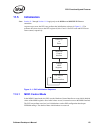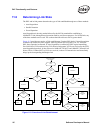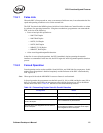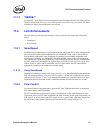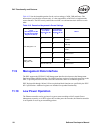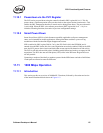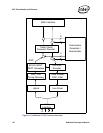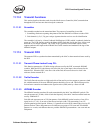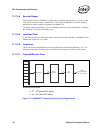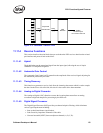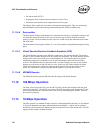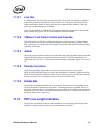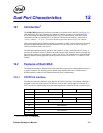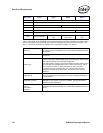
Software Developer’s Manual 197
PHY Functionality and Features
11.11.2 Transmit Functions
This section describes functions used when the Media Access Controller (MAC) transmits data
through the PHY and out onto the twisted-pair connection.
11.11.2.1 Scrambler
The scrambler randomizes the transmitted data. The purpose of scrambling is two fold:
1. Scrambling eliminates repeating data patterns from the 4DPAM5 waveform to reduce EMI.
2. Each channel (A, B, C, D) gets a unique signature that the receiver uses for identification.
The scrambler is driven by a Linear Feedback Shift Register (LFSR), which is randomly loaded at
power-up. The LFSR function used by the Master differs from that used by the Slave, giving each
direction its own unique signature. The LFSR, in turn, generates uncorrelated outputs. These
outputs randomize the inputs to the 4DPAM5 and Trellis encoders and randomize the sign of the
4DPAM5 outputs.
11.11.3 Transmit FIFO
The transmit FIFO re-synchronizes data transmitted by the MAC to the transmit reference used by
the PHY.
11.11.3.1 Transmit Phase-Locked Loop PLL
This function generates the 125 MHz timing reference used by the PHY to transmit 4DPAM5
symbols. When the PHY is the Master side of the link, the crystal input is the reference for the
transmit PLL. When the PHY is the Slave side of the link, the recovered receive clock is the
reference for the transmit PLL.
11.11.3.2 Trellis Encoder
The Trellis Encoder uses the two high-order bits of data and its previous output to generate a ninth
bit, which determines if the next 4DPAM5 pattern should be even or odd. This function provides
forward error correction and enhances the signal-to-noise (SNR) ratio by a factor of 6 dB.
11.11.3.3 4DPAM5 Encoder
The 4DPAM5 encoder translates 8B codes transmitted by the MAC into 4DPAM5 symbols. The
encoder operates at 125 Mhz, which is both the frequency of the MAC interface and the baud rate
used by 1000BASE-T.
Each 8B code represents one of 256 data patterns. Each 4DPAM5 symbol consists of one of five
signal levels (-2,-1,0,1,2) on each of the four twisted pair (A,B,C,D) representing 5
4
or 625
possible patterns per baud period. Of these, 113 patterns are reserved for control codes, leaving 512
patterns for data. These data patterns are divided into two groups of 256 even and 256 odd data
patterns. As a result, each 8B octet has two possible 4DPAM5 representations—one even and one
odd pattern.



